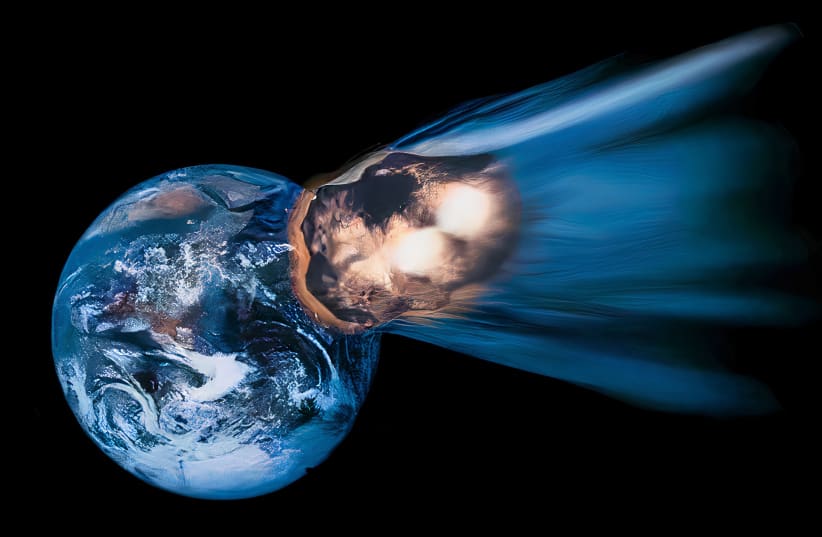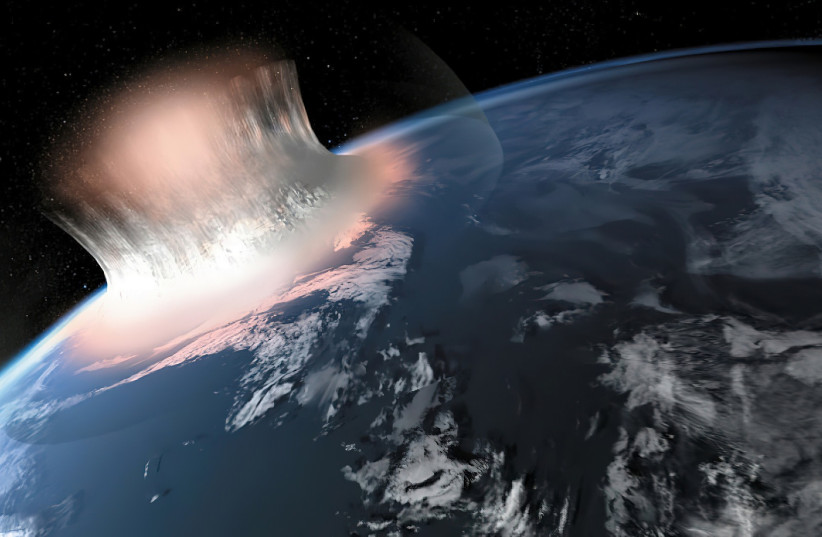A massive asteroid nearly twice the size of the Great Pyramid of Giza is heading towards Earth's orbit in late December, according to NASA's asteroid tracker, though it is unlikely to strike the planet.
Known as 2017 AE3, the asteroid has an estimated diameter ranging between 120 meters and 260 meters. For comparison, at its maximum estimated size, it would be near twice the size of the Great Pyramid of Giza in Egypt and is around 1.15 times the height of San Francisco's Golden Gate Bridge.
Heading for the planet's orbit on December 29, in the last major asteroid flyby of 2021, the asteroid will pass by the Earth at a distance of around 354 million kilometers. For comparison, the distance between the Earth and the Moon is around 384,000 kilometers, so 2017 AE3 will still pass by at a safe distance.
If the Earth wasn't located in 2017 AE3's path, the result could be disasterous.
According to NASA, any asteroid 140 meters in diameter or larger could have a potentially catastrophic impact if it crashed into Earth.
According to research from the Davidson Institute of Science, the educational arm of Israel's Weizmann Institute of Science, an asteroid over 140 meters in size would release an amount of energy at least a thousand times greater than the energy released by the first atomic bomb if it impacted Earth. Something even larger – over 300 meters wide like the asteroid Apophis – could destroy an entire continent.
And an asteroid over a kilometer in size could trigger worldwide cataclysms.
The last time an asteroid struck the planet was in 2013 in Russia when a 17-meter asteroid exploded in the atmosphere.
The last impact from an asteroid this big was in 1908 above the Podkamennaya Tunguska River in Russia, in what has now become known as the Tunguska event.
When the asteroid exploded in the air several kilometers above the area, it produced a massive 12 megaton explosion, causing widespread destruction for thousands of kilometers. That would make it about 800 times more powerful than "Little Boy," the approximately 15-kiloton atomic bomb detonated during World War II over Hiroshima, and 600 times more than "Fat Man," the 20-kiloton one detonated over Nagasaki three days later.
The death toll from the Tunguska event was extremely low, however, with only around three people thought to have been killed in it, due to how remote and sparsely populated the region was. But the damage was still evident, with about 80 million trees completely flattened, winds of around 27 km., a second bursting around and a loud noise heard far and wide. Tremors and airwaves were felt as far away as even Washington and Indonesia.
The few eyewitness accounts that do exist recounted the terrifying explosion, strong winds, tremors and incredibly loud noises.
The Tunguska event is the largest in recorded history – though larger prehistoric ones happened – and is one of the largest explosions ever recorded, far more powerful than many nuclear bombs.
And an impact by 2017 AE3 would likely be far more devastating.
The destructive nature of asteroids, even small ones, is something well-known to experts, with space agencies around the world monitoring for potential catastrophic impacts, as well as researching potential means of stopping them.
One method for possibly stopping the impact of an asteroid is through the use of deflection, which would mean launching something to slightly alter its path. The most prominent of these efforts is the Double Asteroid Redirection Test (DART) Mission currently underway, the result of efforts by NASA and the Applied Physics Laboratory.
This would be the equivalent of punching an asteroid with a rocket with enough speed to change its direction by a fraction of a percent.
The DART Mission is humanity's first real attempt at testing a defense against an asteroid impact and was launched towards the Didymos binary asteroid system.
But asteroids routinely flying near Earth's orbit is also a benefit, as they present ideal opportunities for exploration and, in the future, exploitation by mining.
Many asteroids are teeming with valuable minerals like iron, nickel and more. As such, they represent ideal targets for mining, something that until now has been one of the most severe sources of pollution and environmental destruction on Earth.

